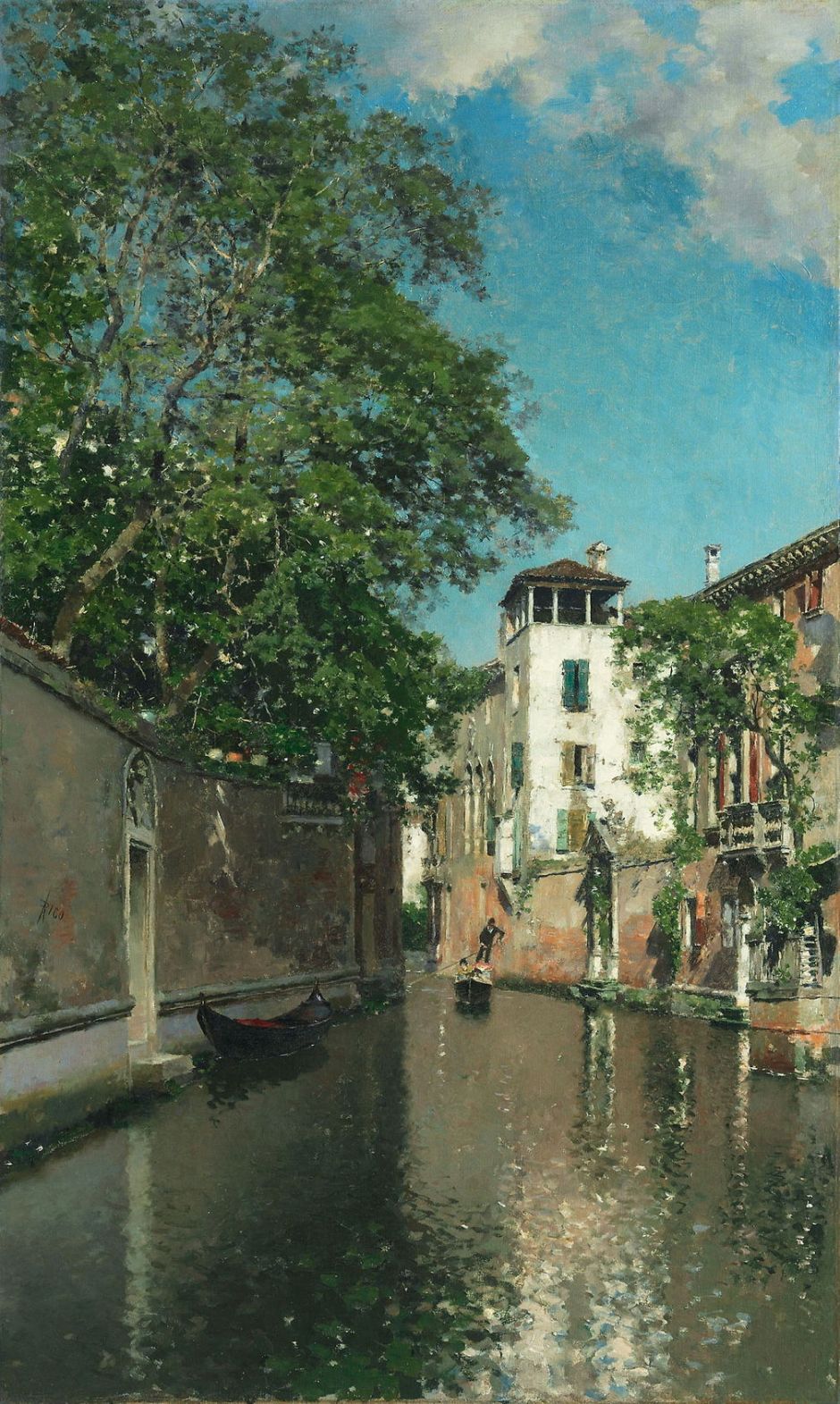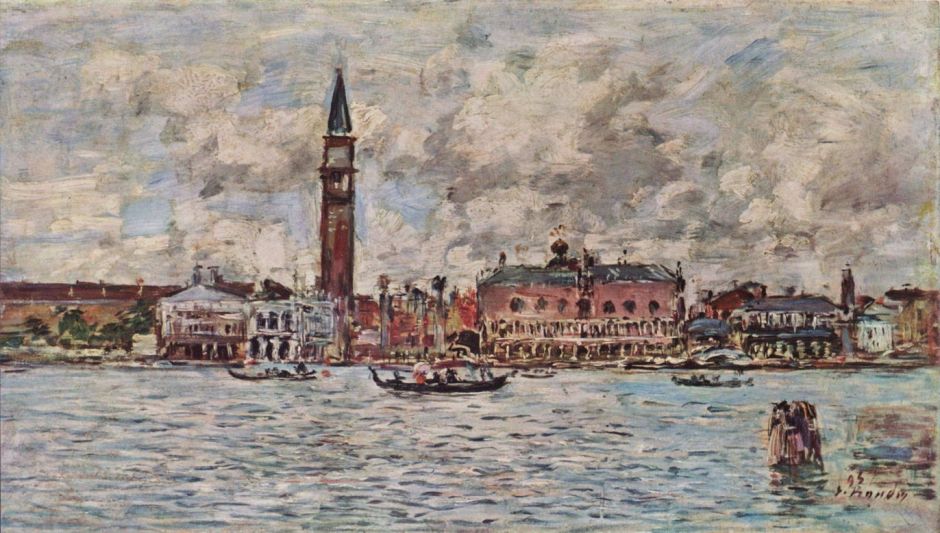Canals of Venice: 1875-1895
In the closing decades of the nineteenth century, Venice became increasingly popular with painters. Access to the city had improved in the 1860s, when its Santa Lucia railway station opened at the north-west end of the Grand Canal, although the famous Simplon Orient Express train didn’t start operating into Venice until well into the twentieth century.
One of the earliest of this succession of artists was Martín Rico from Spain. It was his discovery of Venice in 1873 that led to the perfection of his artistic style and the creation of many of his most emblematic works. From this first trip until his death thirty-six years later, Rico spent every summer with the exception of one painting there, until he died in Venice in 1908.

Many of his paintings show lesser-known canals and less-frequented areas, like A Canal in Venice from about 1875. Although populated by the occasional gondola and a small clutch of children, they have a wonderful air of peace and serenity. His broken reflections are painted quite tightly although he is reputed to have painted mainly en plein air.

This undated view of the Grand Canal just catches the dome of the church of Santa María della Salute, Venice, and is also known by the fuller title of Grand Canal and the Church of Santa María della Salute, Venice.

Rico’s Canal in Venice is another undated view of one of the minor ‘backstreet’ canals that is deeply serene.

His undated cross-canal view of Venice appears to be a ‘proper’ plein air oil sketch with rougher facture for once.

The first of several Impressionists to visit Venice, Pierre-Auguste Renoir chose a view of the famous Piazzetta adjoining Saint Mark’s Square in his Doge’s Palace, Venice from 1881. The tops of the roofs follow the horizontal centreline, with the Campanile reaching well above that, and various boats below the band of buildings.

The American Impressionist John Henry Twachtman was one of several great American landscape painters who visited Venice. His watercolour Venice (1881) was clearly painted quickly en plein air. The lower half of his paper contains only reflections; the upper half is a view from the water placing the Campanile slightly to the right of centre, little higher than neighbouring church domes. Superimposed on that waterfront are passing boats, their sails and rigging complicating the buildings behind. His palette is also limited to earth colours, with grey-blue on the water below.

The French Naturalist Pascal Dagnan-Bouveret also visited Venice, where his brushwork was surprisingly loose and his marks painterly, as shown in his sketched View of Venice (1882).

While he was working in Europe, the American Frank Duveneck visited the city on several occasions. His Grand Canal in Venice (c 1883) was a study for his Water Carriers below.

Duveneck was also a successful print-maker, as exemplified in his Bridge of Sighs (1883).

Water Carriers, Venice from 1884 is probably Duveneck’s finest painting of Venice, combining the view from his earlier study with an intimate insight into the daily work of ordinary Venetians. His visits to the city stopped when his wife died in 1888, and he returned to the USA.

In about 1885, Henri Rouart, one of the patrons of the French Impressionists and a talented painter in his own right, visited Italy. While there, he painted Venice, San Michele, showing the church of San Michele in Isola, on the island with the city’s main cemetery.

Towards the end of his career in the 1890s, Eugene Boudin visited Venice several times. Among his paintings there is Piazzetta San Marco in Venice (1895), which adopts the same view and composition as Renoir’s earlier Doge’s Palace, Venice from 1881. This painting is sometimes mis-titled as the Piazza San Marco, which it doesn’t show, although the tower is its high Campanile.

Franz Richard Unterberger was a landscape painter from the Austrian Tirol who produced many fine views of Venice in a more traditional Romantic manner. His Rio San Barnaba, Venice (date not known, but probably around 1895) gives a good account of his approach and style. The motif isn’t far from Saint Mark’s, but the tower shown isn’t the Campanile.
Although not as highly finished as the classical works of Canaletto, Unterberger puts great detail into buildings, figures, and other staffage, even down to painting the ties and walking sticks of figures. However, fine brushstrokes are distinct over the faces of buildings and in the water, and the clouds display marks more clearly.
In just a few years, at the turn of the century, Venice was to become popular with the most radical artists, including Divisionists such as Henri-Edmond Cross and Paul Signac, as well as John Singer Sargent.









